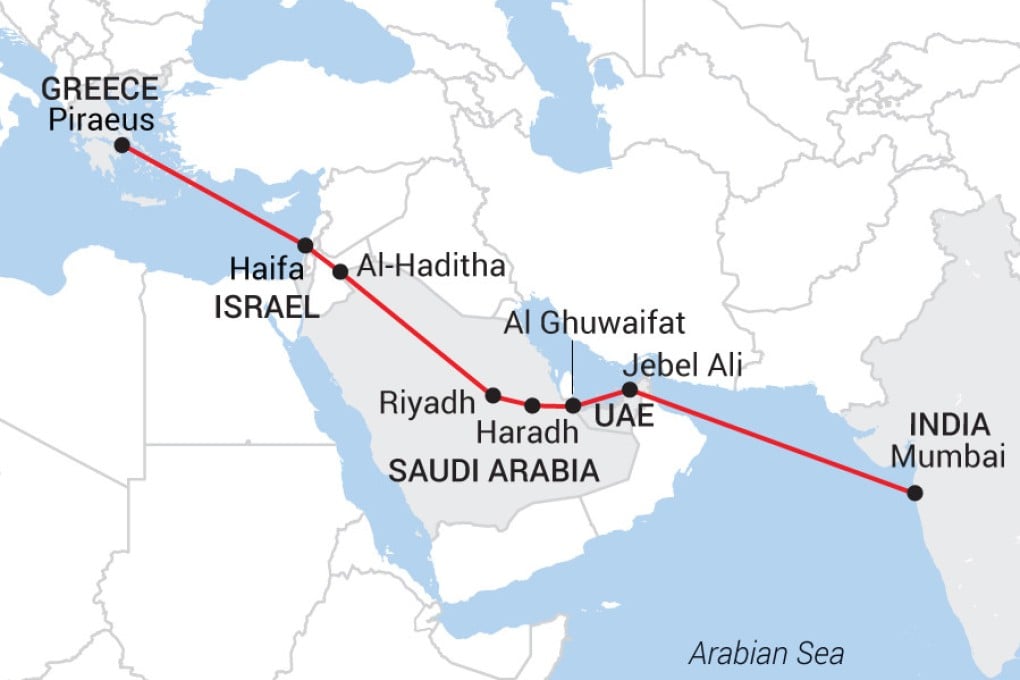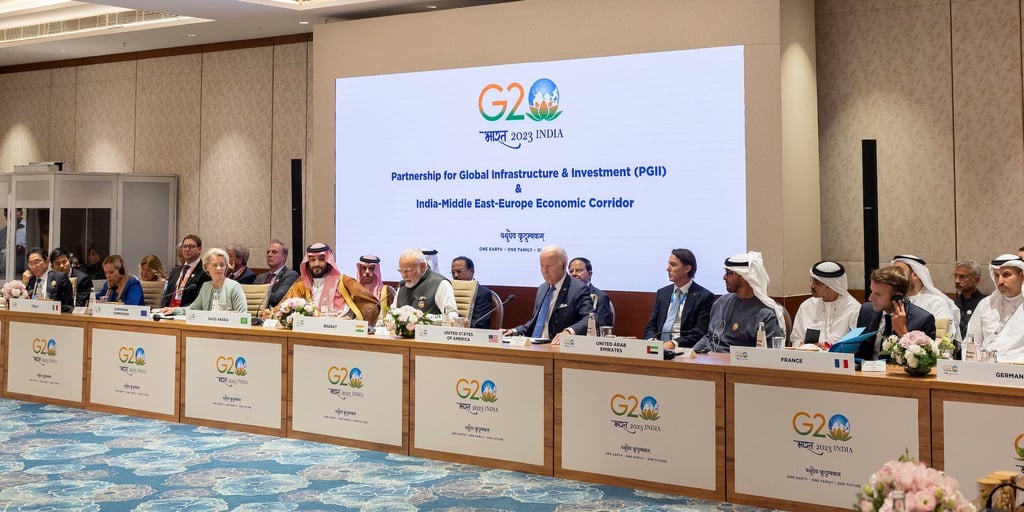A Western-led trade corridor that challenges China’s belt and road? Not so fast, analysts say
- Announced on the G20 margins, the US$20 billion India-Middle East-Europe Corridor (Imec) hopes to connect India to Europe via the UAE, Saudi Arabia, Jordan and Israel
- Logistics experts, though, say the project, if and when it comes to life, would likely supplement the Belt and Road Initiative, not replace it

Leaders from the West, Middle East and India projected a sense of achievement when they came together on the margins of the G20 summit in New Delhi this month to declare a grand plan for a multinational ship-to-rail transit network.
Indian Prime Minister Narendra Modi described the project – officially named the India-Middle East-Europe Corridor (Imec) – as “important and historic” while US President Joe Biden called it a “real big deal”. The two were joined in their praise and support for the plan by leaders of Saudi Arabia, the United Arab Emirates, France, Germany, Italy and the European Union.

Intended to “stimulate economic development through enhanced connectivity”, according to a White House fact sheet, the ambitious US$20 billion project aims to connect India to Europe via the UAE, Saudi Arabia, Jordan and Israel. The participants intend to meet within the two months to develop and commit to an action plan and timetables.
The announcement quickly prompted comparisons with China’s Belt and Road Initiative (BRI), President Xi Jinping’s signature multibillion-dollar push to link the world’s second largest economy with the rest of the world through trade and infrastructure.
Some in India and the West described Imec as an “answer” to the BRI, now a decade old. Others wondered if the proposal would set in motion the end of its Chinese rival, that counts around 150 countries as members.
But many analysts said that such speculation was detached from economic and regional realities. They noted the lack of details concerning the project, contending that the corridor was less a threat to BRI than a reflection of what US-China competition means for smaller developing countries. And logistics experts emphasised that the project, if and when it comes to life beyond signed agreements, would likely supplement the BRI, not replace it.
